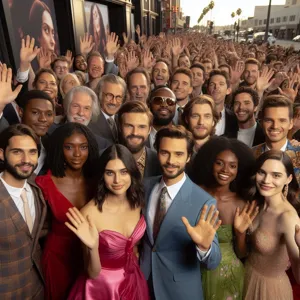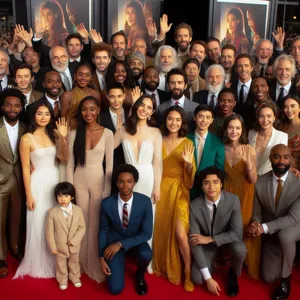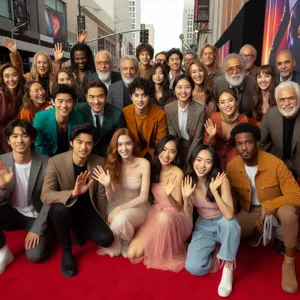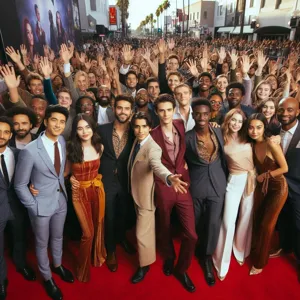As the world’s most beloved sport, soccer has the power to unite people from all walks of life, transcending borders, languages, and cultures.
However, the shadow of racism continues to loom over the beautiful game, tarnishing its spirit and creating divides within the very communities it seeks to bring together. In this blog post, we will explore proactive strategies to combat racism and foster a more inclusive soccer environment for players, fans, and families alike. From grassroots initiatives and educational programs to the role of clubs and professional leagues in championing diversity, we will delve into actionable steps that can be taken at every level of the sport. Join us as we kick out racism and work towards a soccer community where everyone feels valued, respected, and empowered to play the game they love without prejudice or fear.
1. Understanding the Impact of Racism in Soccer

Racism in soccer is a pervasive issue that not only affects players on the field but also ripples through the entire community, impacting fans, families, and the sport’s reputation as a whole. Understanding its impact is crucial in order to combat this deeply rooted problem. From the youth leagues to professional clubs, instances of racial abuse can create an environment of fear and hostility, discouraging talented individuals from participating in the sport they love. Players of color often face discriminatory remarks, both from opposing fans and, at times, from teammates, which can lead to severe emotional distress and a feeling of alienation.
Moreover, the consequences extend beyond the emotional toll; they can affect performance and mental health, leading to decreased participation and engagement from those who feel unwelcome. The ramifications of racism in soccer can also tarnish the image of the sport itself, alienating fans and sponsors who believe in the principles of equality and respect. It can perpetuate a culture of silence, where individuals feel that speaking out may jeopardize their careers or relationships within the sport.
Understanding the impact of racism in soccer means recognizing how it can stifle the growth and development of the game. It hinders the creation of a truly diverse and inclusive environment, where everyone, regardless of their background, can thrive both on and off the pitch. By acknowledging these effects, we can begin to implement strategies that foster a sense of belonging for all players and fans, ultimately enriching the soccer community as a whole.
2. The Importance of Diversity and Inclusion in Sports
Diversity and inclusion in sports are not just buzzwords; they are essential pillars that enrich the very fabric of the game. Soccer, as one of the most popular sports worldwide, serves as a melting pot of cultures, backgrounds, and experiences. This diversity not only enhances the quality of play but also fosters a deeper understanding and appreciation among players, fans, and communities.
When teams embrace players from various ethnicities, genders, and socioeconomic backgrounds, they create an environment that celebrates differences rather than shying away from them. This results in a more dynamic playing style, as players bring unique perspectives and skills to the pitch. Moreover, diverse teams have been shown to perform better, as they can draw on a wider range of strategies and problem-solving approaches during matches.
Inclusion goes hand in hand with diversity, ensuring that every individual feels valued and respected regardless of their background. This is particularly vital in combating racism and discrimination within soccer communities. When clubs and organizations actively promote inclusion, they cultivate a sense of belonging that encourages participation from underrepresented groups. This not only expands the talent pool but also enriches the community, making it more vibrant and cohesive.
Furthermore, promoting diversity and inclusion sends a powerful message to fans and young players alike. It fosters a culture of acceptance and respect, teaching the next generation the importance of unity in diversity. By showcasing role models from all walks of life, soccer can inspire young athletes to pursue their dreams without fear of prejudice or discrimination.
Ultimately, embracing diversity and inclusion in soccer is not just beneficial for the players; it is a vital step toward creating a more equitable and just society. By working together, we can ensure that the beautiful game remains a source of joy and connection for everyone, irrespective of their background.
3. Recognizing Racism: Signs and Examples in the Soccer Community

Recognizing racism within the soccer community is a crucial step toward fostering an inclusive environment for all players and fans. Racism can manifest in various forms, often subtly woven into the fabric of the sport, making it essential to understand its signs and examples.
One of the most visible indicators of racism in soccer is the use of derogatory language or slurs directed at players based on their ethnicity or race. This can occur during matches, where fans may chant offensive slogans or shout insults at players of color. Such behavior not only diminishes the spirit of the game but also creates a hostile atmosphere that can discourage talented individuals from participating.
Moreover, microaggressions, which are often overlooked, can also serve as a sign of latent racism. Comments that question a player’s abilities based on their race—such as suggesting they are only successful due to their physicality rather than skill—perpetuate harmful stereotypes. These subtle yet insidious remarks can impact a player’s confidence and sense of belonging within the sport.
We must also consider the representation within the sport. When examining coaching staff, administrative roles, and media coverage, a lack of diversity can highlight systemic issues within soccer organizations. For instance, if the majority of coaches, executives, and decision-makers come from similar backgrounds, it raises questions about inclusivity and the opportunity for underrepresented groups to have their voices heard.
In addition, the online sphere is rife with examples of racism, where anonymous users may feel emboldened to unleash hateful comments on social media platforms. Incidents of players receiving racist threats or being targeted with abuse on social media after a poor performance underscore how deeply entrenched racism can be within the sport.
Recognizing these signs is the first step toward meaningful change. By bringing awareness to these issues, soccer communities can work together to confront and dismantle racism, ensuring that the beautiful game is accessible and welcoming to everyone, regardless of their background.
4. Creating Safe Spaces: The Role of Clubs and Organizations
Creating safe spaces within the soccer community is essential for fostering inclusivity and combating racism. Clubs and organizations play a pivotal role in this process, taking the lead in establishing environments where everyone—regardless of their background—feels welcome, respected, and valued.
To begin with, it is crucial for clubs to implement comprehensive diversity and inclusion training for all staff, coaches, and players. This training should not only address the importance of diversity but also provide practical strategies for identifying and confronting racist behavior. By equipping individuals with the knowledge and tools to navigate sensitive conversations, clubs can cultivate a culture of awareness and empathy that permeates all levels of the organization.
Furthermore, clubs should actively engage with the communities they serve. This can be achieved through outreach programs that encourage participation from underrepresented groups, showcasing the beauty of diversity in soccer. Events such as multicultural tournaments or workshops that celebrate different cultures through the lens of the sport can help bridge gaps and foster mutual respect among players and fans alike.
Establishing clear policies against discrimination is another pivotal step. Clubs must take a strong stance against racism by creating and enforcing a code of conduct that outlines consequences for discriminatory behavior. Transparency in the enforcement of these policies not only sends a strong message but also reassures community members that their safety and dignity are prioritized.
Creating safe spaces also means providing platforms for marginalized voices. Clubs should encourage dialogue among players, coaches, and fans about their experiences and perspectives related to racism in soccer. This can be facilitated through regular forums, discussion panels, or support groups that allow individuals to share their stories and learn from one another, thereby building solidarity within the community.
Incorporating these strategies not only enhances the soccer experience for all participants but also positions clubs as leaders in the fight against racism. By making a concerted effort to create safe spaces, soccer organizations can help ensure that the beautiful game remains a source of joy and unity for everyone, fostering a community where diversity is celebrated, not just tolerated.
5. Education and Awareness: Training Coaches and Players

Education and awareness are the cornerstones of fostering an inclusive soccer community, and training coaches and players is a critical step in this endeavor. To create a safe and welcoming environment on the field, it is essential to equip both coaches and players with the knowledge and tools to understand the impact of racism and to promote diversity and respect among teammates and opponents alike.
Coaches play a pivotal role in shaping the attitudes and behaviors of their players. By undergoing training that emphasizes the importance of inclusivity, coaches can learn to recognize their own biases and understand the cultural dynamics that exist within their teams. Workshops and seminars focused on anti-racism can provide valuable insights into the history of racism in sports, the psychological effects of discrimination, and effective communication strategies for addressing incidents of racism when they arise. Coaches can then incorporate these lessons into their coaching philosophy, ensuring that respect and inclusivity are core values in their practices and games.
For players, education should begin at a young age, fostering a culture of empathy and understanding. Implementing age-appropriate educational programs that highlight the importance of inclusivity can encourage players to embrace diversity, celebrate differences, and stand against discrimination. This can be achieved through interactive activities, discussions, and role-playing scenarios that allow players to explore the impact of their words and actions on others.
Moreover, creating a peer mentorship program where older, experienced players can guide younger teammates can further solidify these lessons. When players see their role models actively promoting inclusivity, the message resonates more deeply, encouraging them to adopt similar attitudes both on and off the field.
By prioritizing education and awareness through comprehensive training for coaches and players, soccer clubs can cultivate an environment where every individual feels valued and respected. This proactive approach not only combats racism but also strengthens the bonds within teams, leading to a more cohesive and positive soccer community where everyone can thrive.
6. Encouraging Open Dialogue: Establishing Communication Channels
Encouraging open dialogue within the soccer community is essential for dismantling racism and fostering inclusivity. Establishing effective communication channels allows players, coaches, fans, and administrators to voice their experiences, concerns, and suggestions in a safe environment. This can take various forms, from dedicated online forums and social media groups to regular community meetings and workshops. The goal is to create spaces where individuals feel empowered to share their stories without fear of backlash.
One effective strategy is to implement anonymous reporting systems, allowing individuals to report incidents of racism or discrimination confidentially. This ensures that voices are heard, and appropriate actions can be taken without putting anyone at risk. Additionally, establishing regular feedback loops, where community members can provide input on policies and initiatives, helps to ensure that everyone feels included in the decision-making process.
Encouraging open dialogue also means actively listening. Organizing panel discussions with diverse voices from the soccer community—including players from different backgrounds, coaches, and sports psychologists—can provide valuable insights into the impacts of racism and the importance of inclusion. These conversations can help bridge gaps in understanding and foster empathy among community members.
Moreover, promoting educational workshops that focus on cultural sensitivity, anti-racism, and the historical context of racism in sports can help cultivate a more informed and compassionate community. When individuals learn from one another and engage in honest discussions, it strengthens the community’s resolve to combat racism and promotes a culture of inclusivity.
By establishing robust communication channels, we not only create opportunities for dialogue but also signal a commitment to change. This proactive approach helps to build trust within the community and reinforces the message that racism has no place in soccer—or any sport. Together, through open and honest conversations, we can pave the way for a more inclusive soccer community where everyone feels valued and respected.
7. Implementing Anti-Racism Policies and Codes of Conduct

Implementing anti-racism policies and codes of conduct is a crucial step in fostering a more inclusive soccer community. These policies serve as a framework for expected behavior, outlining clear consequences for racist actions and language on and off the field. They signal to players, coaches, officials, and fans that discrimination will not be tolerated, creating a safer and more welcoming environment for everyone involved in the sport.
To effectively implement these policies, organizations should start by engaging stakeholders at all levels, including players, coaches, parents, and community leaders. Facilitating open discussions about racism in soccer and gathering input on policy development ensures that everyone feels invested in the process. Once established, these policies should be communicated clearly and frequently through workshops, meetings, and promotional materials that highlight the importance of respect and inclusivity.
Moreover, a code of conduct should include specific guidelines for behavior during matches and training sessions, addressing both on-field conduct and off-field interactions. Training sessions can be organized to educate everyone about the impacts of racism and the importance of diversity, equity, and inclusion in the sport. These sessions can not only help in recognizing harmful behaviors but also empower individuals to stand against racism when they witness it.
It’s also vital to establish a reporting mechanism where players and fans can safely report incidents of racism. This not only holds individuals accountable but also helps organizations track incidents and trends, allowing for appropriate responses and adjustments to their policies.
By committing to robust anti-racism policies and codes of conduct, soccer organizations send a powerful message that they are dedicated to creating a community where every individual, regardless of their background, feels valued and respected. In doing so, they lay the groundwork for a culture of inclusivity that can transform the game and the lives of those who love it.
8. Engaging Fans: Promoting Inclusivity in the Stands
Engaging fans and promoting inclusivity in the stands is crucial to fostering a soccer community where everyone feels welcome and valued. Soccer is more than just a game; it’s a powerful platform for expression, unity, and cultural exchange. To create an inclusive atmosphere, clubs and organizations must actively involve their fans in initiatives that celebrate diversity and combat racism.
One effective strategy is to host themed match days that honor various cultures and communities. These events can feature music, food stalls, and activities that reflect the heritage of different groups, fostering a sense of belonging and appreciation among fans. By inviting diverse cultural groups to participate, clubs not only enhance the matchday experience but also educate attendees about the rich tapestry of backgrounds that make up their fan base.
Additionally, implementing fan-led initiatives, such as anti-racism workshops or community outreach programs, can empower supporters to play an active role in promoting inclusivity. Encouraging fans to share their stories and experiences can create a strong sense of camaraderie and understanding, bridging gaps between different demographics.
Visibility is also key; clubs can prominently display anti-racism messages in stadiums, on social media, and through merchandise. Partnering with local organizations that advocate for social justice can amplify these messages, showing a united front against discrimination.
Moreover, engaging with fans during matches—through chants, banners, and social media interactions—can create a vibrant culture of inclusivity. When fans rally together to celebrate diversity, it sends a powerful message that racism has no place in soccer. By fostering an environment where fans feel heard and valued, clubs can ensure that the beautiful game remains a source of joy and unity for all.
9. Highlighting Positive Role Models: Celebrating Diversity in Soccer
Highlighting positive role models is a powerful strategy for fostering inclusivity within the soccer community. By celebrating players, coaches, and leaders from diverse backgrounds, we can showcase the rich tapestry of talent and experience that exists in the sport. These role models not only inspire young athletes but also serve as living examples of how diversity enhances the game.
Consider the stories of players like Raheem Sterling, who has been a vocal advocate for change and equality within the sport. His journey from the streets of London to the international stage embodies resilience and determination, while his commitment to addressing racism in soccer encourages others to stand up against discrimination. Similarly, the achievements of women in soccer, such as Megan Rapinoe and Alex Morgan, demonstrate the importance of representation and empowerment in promoting gender equality alongside racial inclusivity.
By featuring these role models in community initiatives, youth programs, and promotional campaigns, we can create a narrative that celebrates diversity rather than shying away from it. Social media platforms, local clubs, and educational institutions can collaborate to share stories, host events, and produce content that highlights these athletes’ contributions to the sport and society. This not only helps to normalize diversity but also builds a sense of belonging for all players, regardless of their background.
Moreover, recognizing the achievements of coaches and mentors who prioritize inclusiveness can further reinforce the importance of diverse leadership within the sport. Their experiences and commitment to fostering an inclusive environment can inspire a new generation of players to embrace the values of respect and understanding.
In celebrating diversity in soccer, we not only honor the individuals who break barriers but also cultivate a community where everyone feels valued and empowered to contribute. By highlighting positive role models, we can collectively work towards a more inclusive soccer environment that reflects the beauty of our differences.
10. Collaborating with Local Communities: Building Stronger Relationships
Collaborating with local communities is a powerful strategy for fostering inclusivity in soccer and combating racism within the sport. Building strong relationships with diverse groups not only enriches the soccer experience but also creates a supportive environment where everyone feels valued and represented.
Start by reaching out to local organizations that focus on community engagement, diversity, and youth development. Partnering with schools, cultural centers, and grassroots organizations can open doors to a broader audience. Hosting joint events, such as soccer clinics, cultural festivals, or charity matches, can create opportunities for meaningful interactions between players, coaches, and community members. These events not only promote the sport but also celebrate the unique backgrounds and stories of participants, cultivating a sense of belonging.
Consider establishing mentorship programs that connect seasoned players with youth from marginalized communities. By providing guidance and support, these mentorships can empower young athletes, helping them navigate the challenges of the sport while instilling confidence and resilience. Furthermore, creating a diverse coaching staff that reflects the community can enhance relatability and inspire young players to pursue their passion for soccer.
Regular community meetings can foster open dialogue about issues related to racism and inclusivity in soccer. These discussions offer a platform for community members to voice their concerns, share their experiences, and collaborate on solutions. By actively engaging with local residents, soccer organizations can demonstrate their commitment to understanding and addressing the needs of the community.
Ultimately, collaborating with local communities is about building relationships based on trust, respect, and shared goals. By working together, we can create a more inclusive soccer culture that not only kicks out racism but also welcomes everyone into the beautiful game.
11. Utilizing Social Media for Advocacy and Awareness
In today’s digital age, social media serves as an incredibly powerful tool for fostering advocacy and raising awareness about important issues, and the fight against racism in soccer is no exception. Platforms like Twitter, Instagram, and Facebook allow individuals and organizations to reach vast audiences, creating opportunities to educate, engage, and mobilize supporters for change.
To begin with, creating compelling content that highlights instances of racism in soccer, as well as the positive actions being taken to combat it, is crucial. This can include sharing personal stories from players, coaches, and fans who have experienced racial discrimination, as well as spotlighting initiatives and programs aimed at promoting inclusivity within the sport. Eye-catching graphics, videos, and infographics can enhance engagement and encourage shares, spreading the message even further.
Moreover, using hashtags strategically can amplify your reach. Campaigns like #KickItOut and #NoRoomForRacism have gained traction in the soccer community, and participating in or creating similar hashtags can help unify voices against racism. Encouraging followers to share their own experiences and support can create a ripple effect, prompting discussions that spark change.
Engaging with soccer clubs, professional players, and relevant organizations on social media can also enhance advocacy efforts. By tagging these entities and encouraging them to join the conversation, you can create a community of allies working toward the same goal. Hosting online events such as Q&A sessions, live discussions, or workshops can further engage the audience and provide valuable information on how to combat racism within the sport.
Finally, it’s essential to ensure that your social media advocacy is consistent and ongoing. Regular updates, progress reports on initiatives, and reminders about the importance of inclusivity in soccer will keep the conversation alive and relevant. By leveraging the power of social media, we can build a more inclusive soccer community where racism has no place, fostering an environment where everyone feels welcomed and valued on and off the pitch.
12. Organizing Events and Campaigns Against Racism
Organizing events and campaigns against racism is a powerful strategy for fostering inclusivity within the soccer community. These initiatives serve not only as a platform for raising awareness but also as a rallying point for players, fans, and local organizations to come together in solidarity against discrimination.
Consider hosting workshops and panel discussions that feature diverse voices from the soccer world—players, coaches, and community leaders who can share their experiences and insights on combating racism. These gatherings can create a safe space for dialogue, encouraging participants to confront uncomfortable truths while also learning strategies for allyship and advocacy.
Additionally, plan community soccer tournaments or friendly matches that celebrate diversity. Integrating cultural themes, such as food stalls, music, and traditional attire, can enhance the festive atmosphere while emphasizing the richness that different backgrounds bring to the game. Involve local schools and youth organizations to engage younger players, instilling the values of respect and unity from an early age.
Campaigns that utilize social media can amplify your message, mobilizing support beyond the local community. Create hashtags that resonate and encourage fans to share their stories of inclusivity and diversity within soccer. Partnering with players who have a strong following can also help spread your message, as their influence can inspire many to join the cause.
Ultimately, these events and campaigns are not just about awareness—they’re about action. By fostering an environment where everyone feels valued and respected, we can build a soccer community that stands firmly against racism, paving the way for a more inclusive future in the beautiful game.
13. Resources for Players and Coaches: Tools for Change
Creating a more inclusive soccer community requires not only commitment but also access to the right resources. Both players and coaches can benefit from tools designed to foster understanding and promote diversity within the sport. Here are some invaluable resources that can spark meaningful change:
1. **Educational Workshops and Seminars**: Organizations such as the Professional Footballers’ Association (PFA) and UEFA offer workshops focused on anti-racism training and diversity inclusion. These sessions equip coaches and players with the knowledge to recognize and address discriminatory behavior, fostering a more positive environment on and off the field.
2. **Online Courses**: Platforms like Coursera and edX offer courses on cultural competency and inclusive practices. These courses can be particularly beneficial for coaches, as they provide strategies for creating supportive team dynamics and communication techniques that respect diverse backgrounds.
3. **Community Engagement Programs**: Many local soccer clubs have initiatives that aim to bridge cultural divides through community-based programs. These include partnerships with schools, workshops for parents, and outreach initiatives in underrepresented neighborhoods. Engaging in these programs not only promotes inclusivity but also strengthens community ties.
4. **Support Networks**: Establishing or joining networks that focus on diversity in soccer can provide invaluable support. Organizations like the Black Coaches Association and Kick It Out offer platforms for sharing experiences, challenges, and success stories, cultivating a sense of belonging among marginalized groups in the sport.
5. **Resource Guides**: Many organizations publish guides that outline best practices for promoting diversity and inclusion in soccer. These guides often include case studies, actionable strategies, and templates for developing inclusive policies within clubs and teams.
By leveraging these resources, players and coaches can become effective advocates for change. The journey toward an inclusive soccer community starts with education and awareness, empowering every individual to contribute to a culture of respect and understanding within the beautiful game. Through collective effort and the right tools, we can create an environment where every player feels valued and supported, regardless of their background.
14. Measuring Progress: Evaluating the Effectiveness of Initiatives
Measuring progress in the fight against racism within the soccer community is not just about tracking numbers; it’s about evaluating the impact of initiatives and ensuring that they lead to meaningful change. To truly understand the effectiveness of your efforts, it’s essential to establish clear, measurable goals from the outset. This could involve setting targets for increasing diversity in coaching staff, enhancing representation in leadership positions, or improving participation rates among underrepresented groups in local soccer programs.
Surveys and feedback mechanisms are vital tools in this process. Regularly collecting input from players, coaches, and fans can provide valuable insights into the community’s perceptions of inclusivity and the effectiveness of anti-racism initiatives. Consider utilizing anonymous surveys to encourage honest feedback – this will help you gauge not only the awareness of your initiatives but also the feelings and experiences of those involved.
Beyond numbers and surveys, qualitative assessments play a crucial role in understanding the depth of your impact. Hosting focus groups or community forums can foster open dialogue, allowing participants to share their thoughts and experiences in a safe environment. This can illuminate areas where your programs are succeeding and highlight aspects that require further attention.
Additionally, collaboration with external organizations that specialize in diversity and inclusion can provide an objective viewpoint and professional guidance in assessing your initiatives. By engaging in partnerships with these organizations, you can leverage their expertise to refine your strategies and ensure they align with best practices.
Ultimately, measuring progress is an ongoing process that requires commitment and adaptability. It’s essential to regularly review your initiatives, celebrate successes, and recalibrate your strategies based on feedback and changing community dynamics. By doing so, you’ll not only promote a more inclusive soccer culture but also demonstrate to everyone involved that the soccer community is serious about kicking out racism and fostering an environment where all individuals, regardless of their background, can thrive.
15. The Future of Soccer: Envisioning an Inclusive Community
As we look to the future of soccer, it’s essential to envision a community that thrives on inclusivity, respect, and understanding. This vision is not just about the players on the field but encompasses everyone involved—from coaches and staff to fans, sponsors, and local communities. An inclusive soccer community is one where diversity is celebrated, and every individual feels valued regardless of their race, ethnicity, gender, or background.
Imagine a soccer environment where youth academies actively recruit talent from a variety of neighborhoods, ensuring that children from all walks of life have the opportunity to develop their skills and pursue their dreams. Clubs can invest in community outreach programs, partnering with schools and organizations that promote diversity and provide access to training and resources for underrepresented groups.
Furthermore, as technology continues to influence the game, digital platforms can play a pivotal role in fostering inclusivity. Social media campaigns that highlight diverse players and their stories can inspire young athletes and remind fans that soccer transcends borders. Virtual events and discussions can create safe spaces for dialogue, encouraging individuals to share their experiences and perspectives on racism in sports.
Additionally, clubs should prioritize education and training for coaches and players to recognize and combat prejudice both on and off the field. Workshops that focus on cultural competency, anti-bullying, and allyship can empower members of the soccer community to stand up against racism and become advocates for change.
Ultimately, envisioning a more inclusive soccer community involves a collective commitment to dismantling barriers and biases that have long plagued the sport. It’s about creating a culture where every player feels safe and supported, where diverse voices are heard, and where the beautiful game truly reflects the richness of our global society. By working together, we can ensure that the future of soccer is not only inclusive but also a beacon of hope for positive change in the world at large.
As we conclude our exploration of strategies for kicking out racism and fostering a more inclusive soccer community, it’s clear that the journey toward equality and acceptance requires collective effort and commitment from everyone involved—players, coaches, fans, and organizations. By implementing the strategies discussed, such as promoting diversity in leadership roles, advocating for education and awareness programs, and creating safe spaces for dialogue, we can help transform the beautiful game into a platform that celebrates unity over division. Together, we can ensure that soccer remains a sport where everyone, regardless of their background, feels valued and empowered. Let’s continue to champion inclusivity and work tirelessly to eliminate racism from our fields, making soccer a true reflection of the diverse world we live in. The time for change is now—let’s kick out racism for good!




